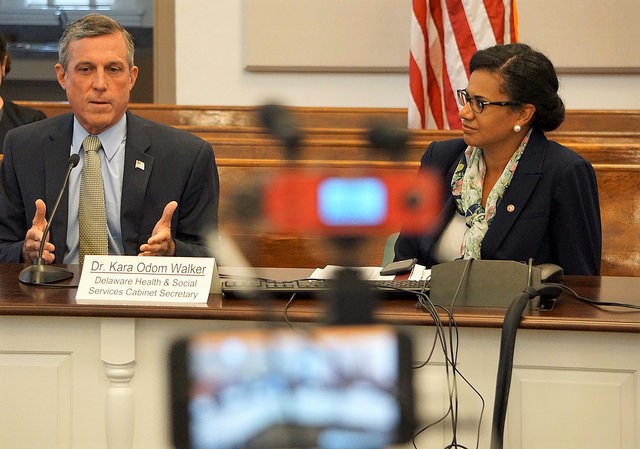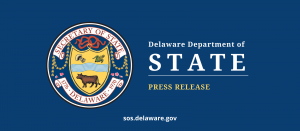
NEW CASTLE (Aug. 27, 2018) – Culminating nearly a year of outreach to and feedback from health stakeholders across the state, Department of Health and Social Services (DHSS) Secretary Dr. Kara Odom Walker today sent her recommendations for establishing health care spending and quality benchmarks to Governor John Carney. The work on the benchmarks began last summer when the General Assembly passed House Joint Resolution 7 authorizing DHSS to develop a health care spending benchmark. The Governor signed that legislation in September 2017, just months after an analysis by the Centers for Medicare and Medicaid Services (CMS) showed Delaware had the third-highest per-capita health care spending rate in the country. That fall, DHSS and Secretary Walker began a series of summits to explore how a spending benchmark could work in Delaware. While the overall health of Delawareans has been improving – Delaware is ranked 30th among the states, according to America’s Health Rankings – the pace of that improvement is trailing the growth of health care spending across the state.
As a way to increase transparency and to tie health care spending to improved outcomes for Delawareans, Governor Carney signed Executive Order 19 in February 2018, creating an advisory group of health care leaders and other key stakeholders to provide feedback to Secretary Walker on strategies for developing spending and quality benchmarks. The advisory group provided its summary report in June 2018.
Based on months of feedback, research and deliberations, Secretary Walker’s recommendations to Governor Carney include:
* The health care spending benchmark should be expressed as a rate using a calculated measure of the per-capita potential gross state product (PGSP) growth, that the Governor should set the initial benchmark for 2019 and that the initial benchmark should remain in place for five years.
* The Delaware Finance Advisory Committee (DEFAC) should establish a new Health Care Spending Benchmark Subcommittee to review the inflation component of the benchmark and the methodology of calculating the benchmark for 2024 and beyond.
* The Health Care Commission should be responsible for setting the health care spending benchmark in the future and consider changes to the benchmark target between 2020 and 2023 if the DEFAC Health Care Spending Benchmark Subcommittee so recommends.
* The Health Care Commission should collect timely and accurate data from licensed health insurers – using the Health Care Claims Database – to inform setting the spending and quality benchmarks, and assessing performance.
* The quality benchmarks should be established to “monitor and establish accountability for improved health care quality that bends the health care cost growth curve.”
* The quality benchmarks should be focused on high-priority areas, including ambulatory care-sensitive emergency department visits; opioid-related overdose deaths and co-prescribed opioid and benzodiazepine prescriptions; and cardiovascular disease prevention.
* That there should be aspirational benchmarks along with more incremental annual benchmarks, and that the Health Care Commission (HCC) should convene a time-limited advisory group to inform the HCC on whether the quality measures should change to reflect new priorities or improved performance.
“I want to thank the hundreds of health care leaders, advocates and consumers across our state who provided feedback on the spending and quality benchmarks,” said Secretary Walker, a board-certified family physician. “They understand the need for our health care system to change in order to be sustainable and to meet the ongoing needs of the patients we serve.”
Secretary Walker encouraged stakeholders to provide feedback to DHSS through ourhealthde@delaware.gov. Ongoing updates also will be posted on DHSS’ health care website, www.ChooseHealthDE.com.
Delaware historically has ranked among the top 10 states in per-capita health care spending, including in 2014, when the state had the third-highest per-capita rate, behind only Alaska and Massachusetts. The 50-state analysis by the Centers for Medicare and Medicaid Services (CMS), released in 2017, found that Delaware’s per-capita rate was $10,254, or more than 27 percent higher than the U.S. average of $8,045. Without changes, the analysis estimated that Delaware’s total health care spending would more than double from $9.5 billion in 2014 to $21.5 billion in 2025. Yet Delaware ranked only 30th among the states for overall health in 2017, according to America’s Health Rankings.



















































































